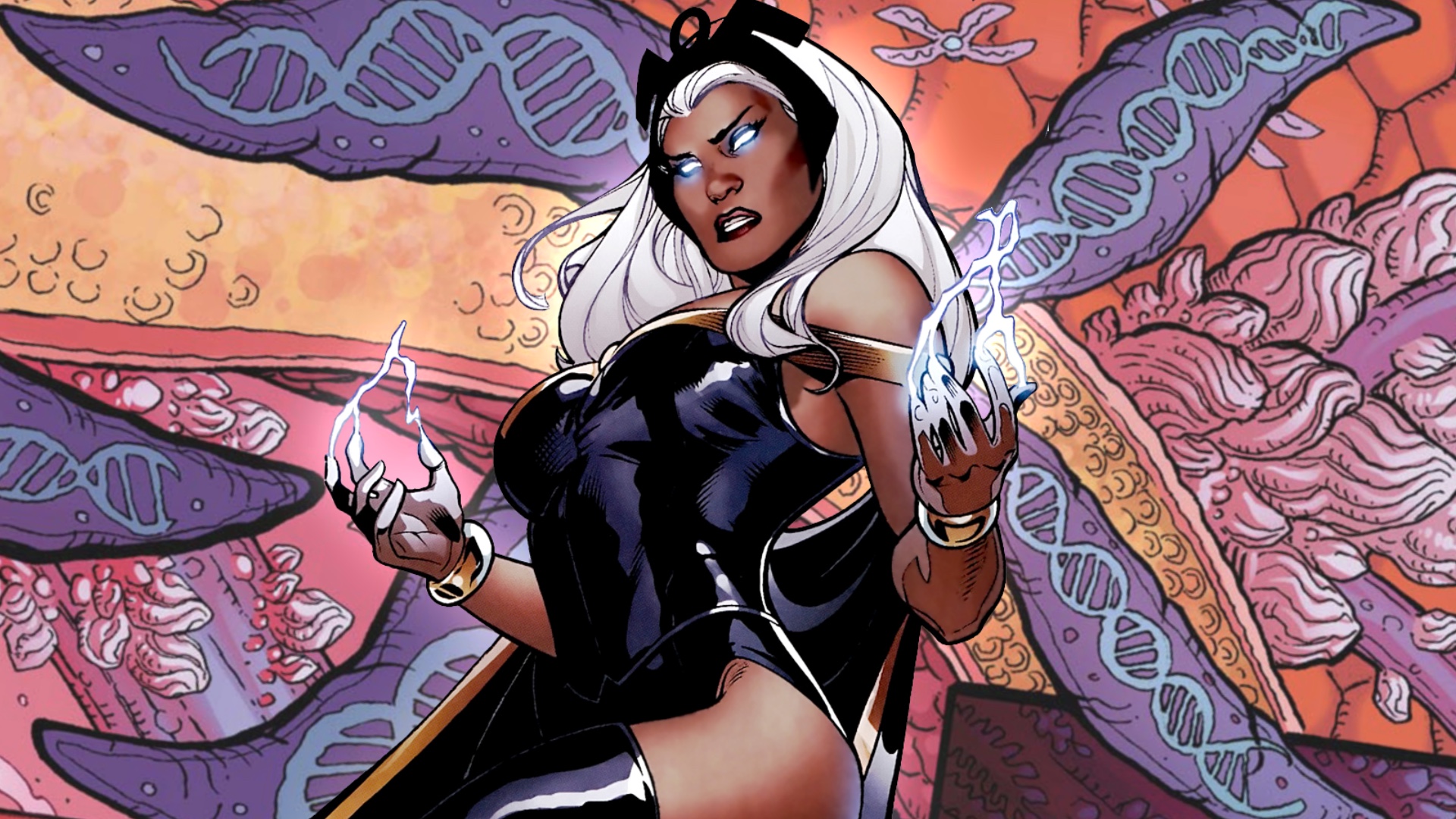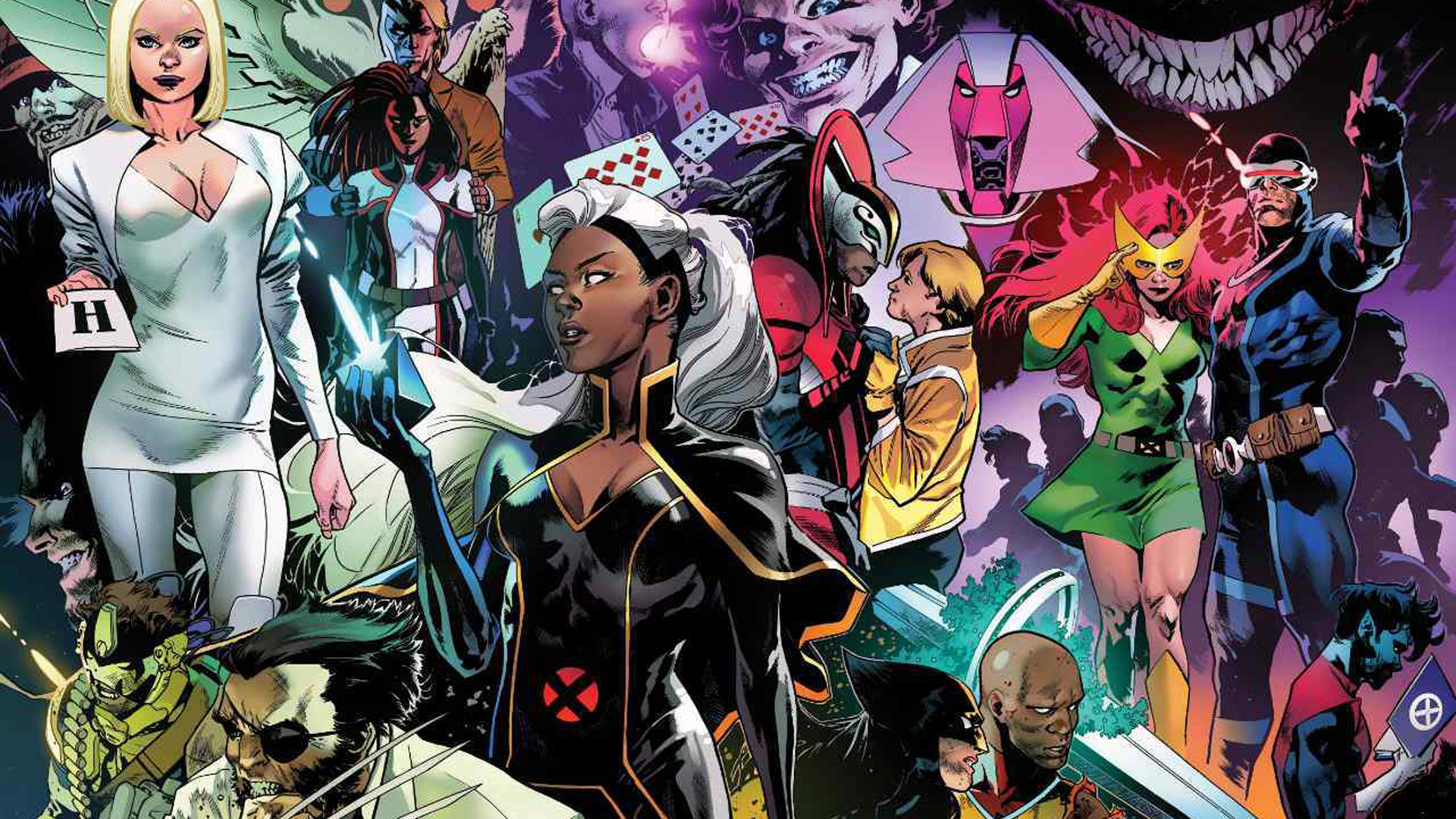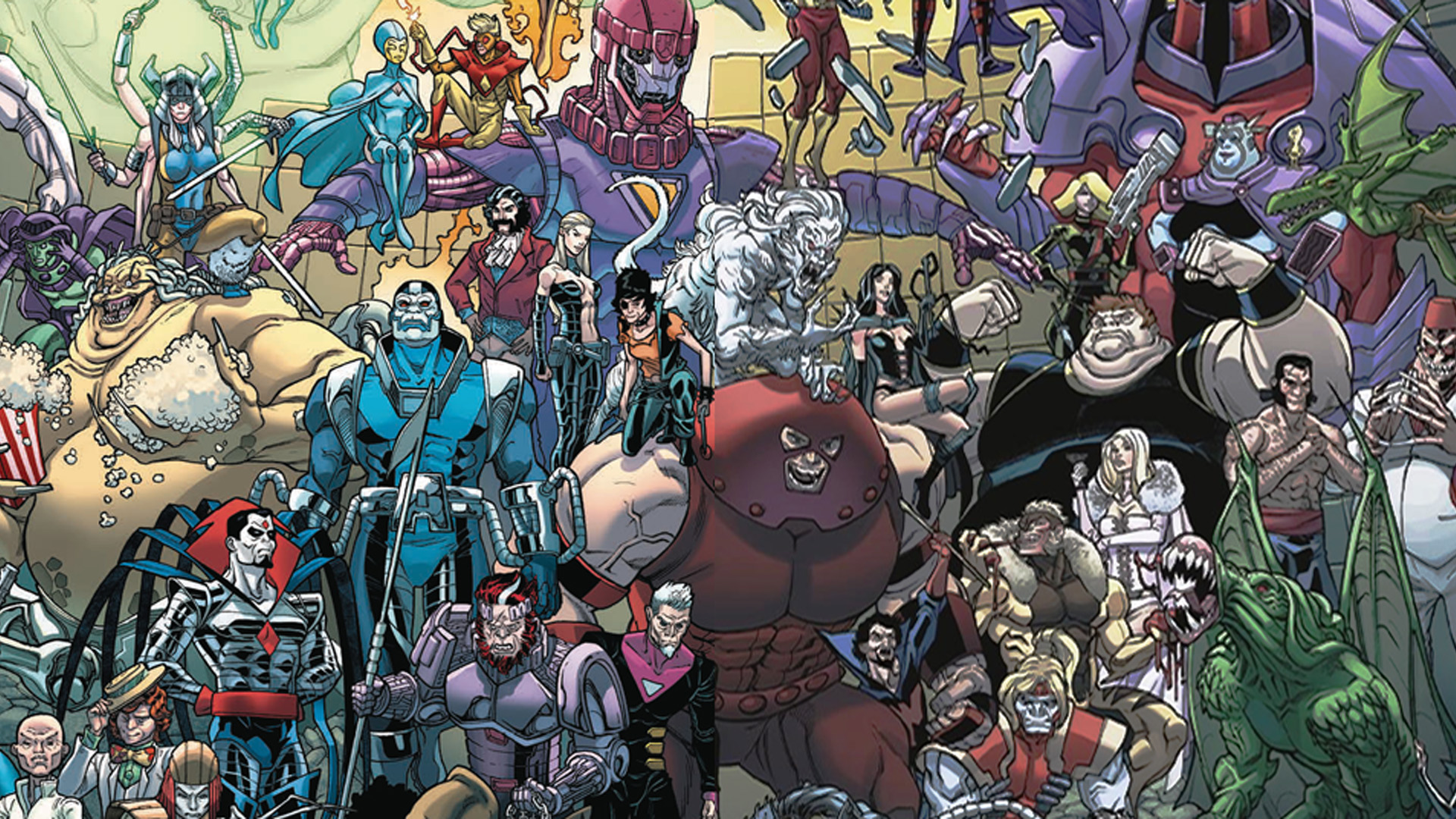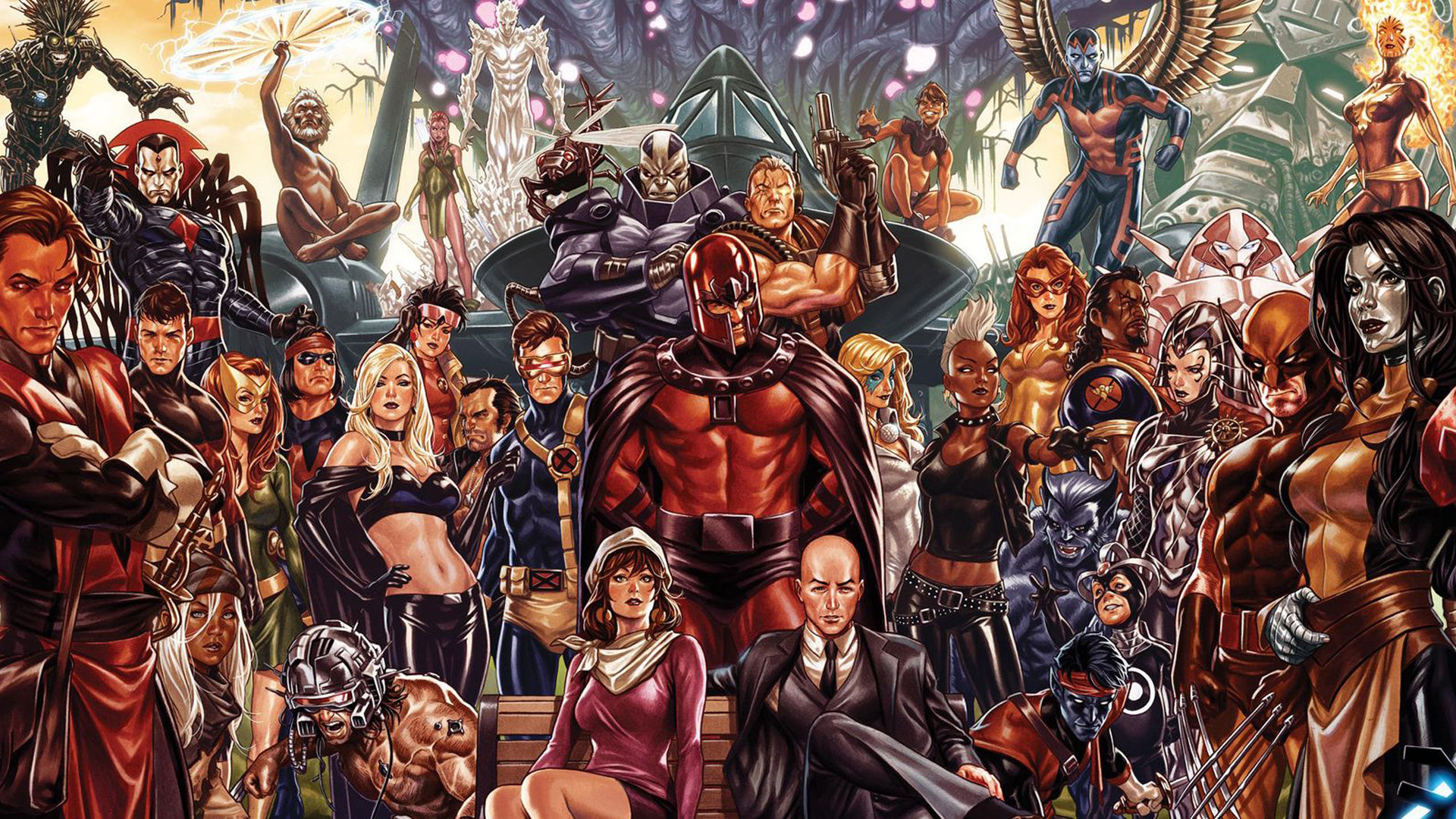
What is an "Omega mutant," and what makes them different from regular mutants? Storm, who is about to get her own ongoing series as part of the new X-Men comic relaunch and who just joined the Avengers, is considered an Omega mutant - one of the most powerful mutants, by Marvel's concept of mutant power classification.
Mutant classification is a long-running idea in Marvel Comics, going back in some form another almost as far back as the idea of mutants themselves. And with that much history, all wrapped up in the complications of a decades-long sequential narrative, there's a whole complicated theory of comic book science behind measuring, comparing, and classifying the powers of mutants.
Some ideas, like how much one super strong mutant can lift versus another, or how fast one can travel are easily measured and categorized based on the potential and limits of the mutants in question.
But how do you measure a mutant superpower when it can't be boiled down to simple hard numbers like top speed reached, maximum weight lifted, and so on? Over the years, Marvel Comics and its mutant characters have attempted to do that with a decades-old classification system based on the Greek alphabet.
Until recently, this mutant classification system wasn't particularly formalized within Marvel comic book continuity. Sometimes 'Alpha' was used to denote the most powerful of mutants, while at other times 'Omega' was the most powerful classification. Nevertheless, versions of the system were used by the X-Men, SHIELD, the Shi'ar Empire, and others.
Recently, a more defined and official system was introduced in 2019 during the X-Men's 'Dawn of X' era, primarily focused on classifying the most powerful mutants in the modern Krakoan era - what is now officially called Omega-level mutants.
"A mutant whose dominant power is deemed to register - or reach - an undefinable upper limit of that power's specific classification," reads a data page in House of X #1.
The new classification terms are for specific mutant powers, meaning a mutant with multiple powers could have an Omega-level power but also possess different powers at lower/different levels. For example, Jean Grey is an Omega-level telepath but her telekinesis powers qualify at a lower level - meaning she is an Omega-level mutant, even if not all of her powers are at an Omega level.
Given the classification system is relatively new and a little bit complex, Newsarama breaks down the major mutant power classification categories for you:
X-Men mutant classification - Epsilon level

Mutant powers classified as 'Epsilon' are on the lowest end of the mutant power spectrum. These are traditionally non-combative powers - in some cases, it's a physical mutation that doesn't involve a special ability, but in others, it's a non-assuming power with no major effective use.
An example of an Epsilon-level mutant would be someone like Artie Maddicks, at least in terms of his physical mutation. His ability to project simple holograms has not been formally classified.
X-Men mutant classification - Beta level

The next level is 'Beta.' A 'Beta' level power has some practical application (as opposed to the lower, Epsilon level), but is generally minimally useful.
Rogue's early days as a villain, during which she absorbed the memories and powers of Carol Danvers (then Ms. Marvel) would be a good example of a portrayal of Beta-level mutant abilities.
For many years, Rogue didn't have control of her ability to absorb the powers and memories of others, leading her to harm other people as well as herself.
X-Men mutant classification - Alpha level

'Alpha' level mutant powers are the most common superhuman abilities - at least in terms of what readers of Marvel's mutant titles are most familiar with. They have applicable uses and the mutants who possess them have the ability to control those powers within reasonable limits.
A good example of an Alpha-level mutant would be Cyclops, with his ability to emit beams of energy from his eyes.
Rogue, who we mentioned was initially classified as a Beta-level mutant early on, gradually learned to use her abilities - and after the events of the story X-Men: Messiah Complex, could control them to the extent that she was reclassified as an Alpha-level mutant.
X-Men mutant classification - Omega level

Omega-level mutants are the upper limits of their categories in terms of mutant powers. So how does a mutant become defined as 'Omega' level?
Marvel uses Magneto and Forge to illustrate the difference.
Again, from House of X #1:
"Both Magneto and Forge are the most powerful mutants of their power types on the planet Earth (magnetism and technopathy, respectively)," reads the data page. "But what makes Magneto, and not Forge, an Omega level mutant is that the upper limit of Forge's measurable powers could hypothetically be surpassed (and, in fact, has by multiple humans on the planet), while the upper limit of Magneto's powers cannot be surpassed in any measurable fashion."
(Forge is an Alpha-level technopath.)
There can be multiple Omega-level mutants for one power type, however. An example would be Jean Grey and Quentin Quire, who both qualify as Omega-level telepaths.
(If another name is popping into your head right now, read on…)
According to present X-Men continuity, there are currently 25 Omega-level mutants: Monarch, Iceman, Elixir, Jean Grey, Legion, Magneto, Proteus, Mister M, Storm, Exodus, Quentin Quire, Vulcan, Hope Summers, and the recently-introduced Krakoan mutants Isca the Unbeaten, Tarn the Uncaring, Idyl, Genesis, Redroot, the Witness, Stulgid, Lodus Logos, the Knower, Sobunar of the Depths, and Xilo the First Defender.
It's possible for a non-Omega level mutant to 'graduate' to this level. Iceman's abilities/power levels grew naturally over time. Additionally, mutants whose powers are artificially augmented, such as when Cable's telekinesis was enhanced by Blaquemsith and Stryfe in Cable and X-Force #14, can also graduate to 'Omega' level.
If there's a mutant you might assume is missing from this list, you wouldn't be alone or necessarily mistaken. Curiously, the House of X #1 list of Omega-level mutants - 'written' by Charles Xavier - does not include Xavier and his telepathy, which is conspicuous by its absence.
But this is the X-Men's official in-story list of Omega mutants for now. It's possible Marvel/Xavier it doesn't account for all potential Omegas, and Marvel's mutant classification can and almost certainly will change over time. With the entire X-Men line undergoing a relaunch that takes it away from the Krakoa era of House of X, it's entirely possible there will be a new list - or even a whole new system - in place at some point.
If you've made it this far, you're definitely an X-Men fan so make sure you've read all of the best X-Men comics of all time.







